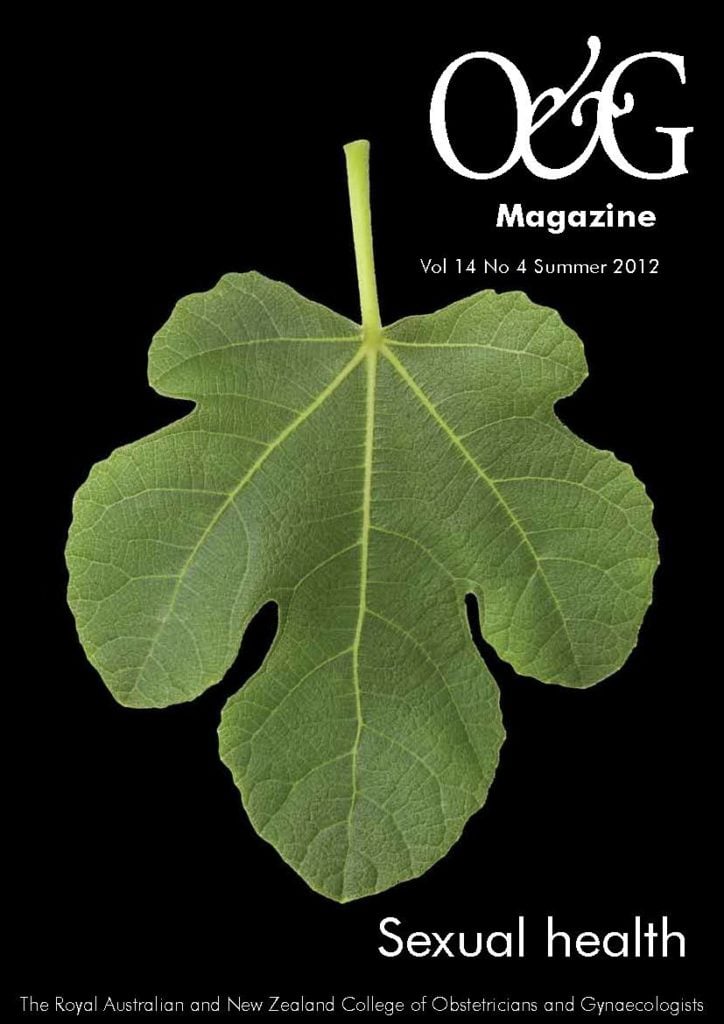Vaginismus is defined as ‘difficulty to allow vaginal entry despite the woman’s express wish to do so’, assuming the absence of obvious organic pathology, such as imperforated hymen.
In a typical western-style approach, many authors further identify ‘primary’ and ‘secondary’ vaginismus, as well as grade the condition from 1 to 4, according to the severity of presentation (Lamont 19781). This stratification is however of little clinical benefit, either from a diagnostic or therapeutic point of view. An argument can be made possibly that someone presenting with ‘vaginismus grade 4’ will be a greater therapeutic challenge, but the therapeutic approach remains the same. The true incidence of vaginismus is unknown through lack of adequate epidemiology. It is certain that vaginismus is common.
With the introduction, in the late 1990s, of botulinum toxin (BT) for the treatment of vaginismus, there is a tendency today to downgrade vaginismus to a purely mechanical issue that always responds to BT therapy. Injections of BT to treat vaginismus are now even offered in cosmetic surgery outlets. This is the direct result of the efforts by an American plastic surgeon organising courses specifically aimed at spreading the use of BT in the treatment of vaginismus. In a publication, sponsored by the pharmaceutical company manufacturing one type of BT, this plastic surgeon is quoted as saying: ‘Plastic surgeons worldwide with their experience using BT are well positioned to learn more about this relatively unknown entity (equals vaginismus) and render treatment.’ Vaginismus is now a cosmetic issue on a par with facial wrinkles and male baldness!
The pathophysiology of vaginismus is complex, but mainly based on negative affective appraisal of sexual stimuli and a phobia of vaginal penetration. The foundation for these negative attitudes contains religious, cultural, educational, personality and moral elements. A link between vaginismus and sexual abuse in childhood in general is not clearly established, but certainly present in a number of individual cases.
It is important to distinguish vaginismus from dyspareunia. Dyspareunia means pain with intercourse. Vaginismus per se does not hurt, unless there is an attempt at forceful penetration. Unfortunately, many male partners will attribute pain with attempted intercourse to unwillingness or unpreparedness of their partner and label this ‘vaginismus’. Often physicians will agree with this simplistic interpretation. One should note at this point that vaginismus does present in women who are in a same-sex relationship, although the complaint of pain is less likely. Let’s also emphasise that vaginismus can be identified prior to becoming sexually active through, for instance, the inability to insert tampons.
Treatment options
Treatment of vaginismus requires a combination of education, physiotherapy and psychotherapy and, most importantly, involves the partner – if there is one. BT is often required to support the efforts of the physiotherapist, but to say that BT will ‘cure all cases’ is a fallacy or even an insult to the patient. Some sex therapists are able to play a very therapeutic role to achieve a satisfactory result, however, more often than not there is more than one healthcare provider involved.
Education in the context of vaginismus consists of a review of the anatomy and physiology of the genitalia and sexual intimacy. It is no surprise to find that many women are still poorly informed about the functioning of the sexual organs, although the aversion toward touching ‘down there’ is less and less present in younger women, at least in western culture.
Physiotherapy will focus on the patient’s ability to control her superficial and deep muscles of the perineum. The dominant superficial muscle involved is the bulbospongiosus, which flanks the vestibule (or ‘vaginal entrance’) on both sides. The levator ani, which comprises the pubo-rectalis (PR), pubo-cocygeus, ilio-coccygeus and ischio-coccygeus muscles, is a mixed voluntary and involuntary muscle. Toward the midline and the more anterior aspect of the levator is the PR muscle, which is the dominant voluntary bundle. It is also the most intimately related to the lateral vaginal wall from an anatomic point of view. The bulbospongiosus and PR muscles are essentially V shaped. Thus there are two layers, superficial and deep, of V-shaped muscle, which can be said to be the ‘vaginal sphincters’. Contracted bulbospongiosus and PR muscles will prevent vaginal penetration.
The physiotherapist will endeavour to facilitate identification of the muscle by the patient and work to increase voluntary control of gentle contraction and maximal relaxation. A common implement used by physiotherapists is a set of vaginal ‘dilators’ of increasing diameter and length. The vaginal dilator belongs on the list of ‘original medical devices’, having been introduced by Dr Sims himself in the 19th century. The term ‘dilator’ is a misnomer because it implies that the vaginal tissues are fibrotic or otherwise abnormal. Not true. There is no intrinsic tissue pathology. The vaginal wall tissues in vaginismus have a normal pliability. A patient, who waited till late in her 40s to engage in sexual intercourse, may present with some vaginal wall stiffness, but that is the exception. Nevertheless, vaginal ‘dilators’ are well incorporated in the armamentarium of the physiotherapist and likely will remain there for a while.
The physiotherapist has the professional knowledge and expertise to decide when a patient will need treatment with BT. The aim is to induce paresis of the muscles, which seem to escape normal voluntary control, and provide a window of opportunity to maximise the pelvic floor muscle retraining process. The most common muscle pair is the PR, but often there is involvement of the adductors of the legs as well. The usual dose of toxin is 300 IU Dysport® (Ipsen, Waverley VIC) or 100 IU Botox® (Allergan, Gordon NSW) distributed among the affected muscles. The injections are painful and need to be performed under sedation. There is a delay of ten or more days before the BT achieves the desired paresis, which can last for up to six months.
Psychotherapy is, by necessity, more diverse in its approach. The psychological undercurrents present are different in every case and will require an individualised approach. The psychologist will need to identify the importance of negative appraisal, anxiety, fear, control issues, obsession with cleanliness, catastrophising and harm avoidance in the individual patient and adjust treatment accordingly. The psychologist has an important tool, however, for the treatment of vaginismus: hypnosis. Despite the fact that patients consciously understand how their cultural and educational background have contributed to their current situation, they often will not be able to consciously override the urge to initiate a muscle contraction that prevents penetration, at the time when it matters, despite being successful in the clinical setting. The psychologist teaches the patient how to use the modality of self-hypnosis in order that she develops her imagination to allow muscles to respond appropriately whether during the physiotherapist’s treatment, or with partner. At times the psychologist utilises the modality of hypnotherapy (psychotherapy within the state of hypnosis). Very often there are earlier conditioned responses due to inappropriate education, cultural and/or religious beliefs, and at times earlier traumatic sexual experiences. If the patient is amenable to shedding these emotional constraints through psychotherapy, there can be very worthwhile outcomes. In a few instances, it may be necessary to address a broader issue of phobia or anxiety using the appropriate medical therapy.
If there is a partner, then involving the partner is vital for many reasons. A male partner in particular, because of his lack of comprehension, very often contributes to the anxiety the patient undergoes during times of intimacy. Frequently the male partner is also not aware of the extent of the emotions, fear, shame and guilt, for example, that the patient endures because of this problem. Male partners need to be educated on the anatomy and physiology of sexual intimacy just as much as their female counterparts. More importantly, male partners need to understand that vaginismus does not disappear after a single medical consultation (with or without BT). And, most importantly, partners are an integral part of the treatment plan.
Ideally, the psychologist and physiotherapist work together and, in the face of severe cases, are with the patient in the same room at the same time. The treatment consists of removing all pressure of sexual intimacy to start with. Over the subsequent weeks and months, the couple increases gradually the exposure to sexual intimacy, eventually resulting in vaginal intercourse. The aim is to reverse the negative affective appraisal of sexual stimuli through the realisation that intercourse is a beautiful gift to your partner and does not cause discomfort. If BT is considered, it should be integrated into the overall plan, especially from a timing perspective and should not be considered unless physical and psychotherapies have first been tried for several months. The couple should be ready to proceed with attempted penetration when the BT is fully effective. Giving the treatment too early or too late may result in a wasted opportunity or great disappointment.
In summary, vaginismus is a common condition that responds well to a coordinated approach of education, physiotherapy and psychotherapy. However, it should also be said that the underlying issues of negative affective appraisal of sexual stimuli and phobia of vaginal penetration might remain to a variable extent in many patients.
References
- Lamont JA. Vaginismus. Am J Obstet Gynecol. 1978 Jul 15;131(6):633-6.







Leave a Reply